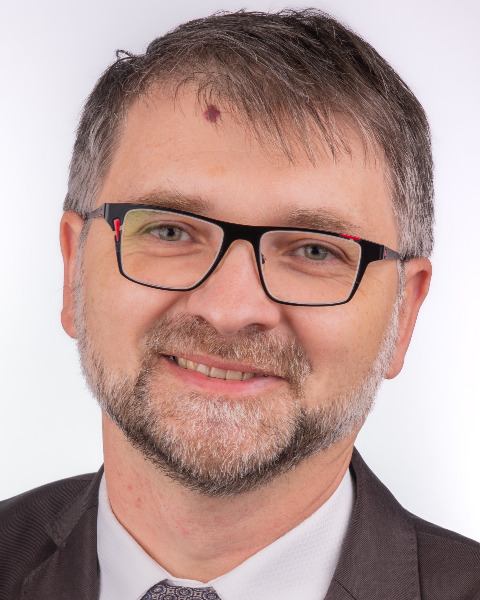Smart Manufacturing
Smart Manufacturing 1: Digital Twins for Design & Manufacturing #1
Dual-Channel Digital Twins: Harnessing EDA and SECS/GEM for Real-Time Equipment Optimization
Tuesday, October 7, 2025
12:15pm - 12:35pm MT
Location: Smart Manufacturing Pavilion Theater, North Building, Lower Level, Expo Floor

Fahad Golra
Director Product Innovation
Agileo Automation
Poitiers, Poitou-Charentes, France
Marc Engel
CEO
Agileo Automation
Poitiers, Poitou-Charentes, France
Speaker (SMfG)(s)
In semiconductor manufacturing, fab IT automation systems rely primarily on the SEMI SECS/GEM and GEM300 standards for equipment control and basic data collection. These standards provide robust state control, recipe management, and alarm handling mechanisms that ensure precise control and communication between fab hosts and tools. While GEM and GEM300 provide some level of data collection, it is not sufficient for the high-resolution, real-time insight required by modern digital twin architectures.
Digital twins of semiconductor equipment represent a virtual replica of the equipment that mirrors real-time operations, providing actionable insights for various use cases such as optimization and predictive maintenance. Achieving this level of synchronization requires granular, high-frequency data streams that are both structured and contextually rich, requirements that exceed the capabilities of SECS/GEM alone. This is where the SEMI standards for Equipment Data Acquisition (EDA), also known as Interface A, come into play. Unlike SECS/GEM, EDA is designed exclusively for equipment data acquisition and operates as a parallel communication channel. Through EDA, data is streamed continuously and in real time, along with hierarchical equipment models that describe not only parameter values, but also the structural organization of the tool. This contextualized data enables digital twins to replicate not only the state but also the internal dynamics of complex tools such as cluster systems, facilitating accurate simulation and anomaly detection.
The real advantage of EDA in digital twin applications is its ability to deliver structured, time-synchronized data directly to analytics platforms or digital models without interrupting equipment control. We co-developed a digital twin architecture based on industrial use cases in collaboration with the Alliance Industrie du Futur (AIF) as part of the French Industry 4.0 initiative. Based on this architecture, we develop dual-channel digital twins using both GEM300 (SECS/GEM) and EDA. In this architecture, the EDA is exclusively dedicated to high-frequency data acquisition, streaming sensor outputs, state transitions, and chamber conditions in real time to the digital twin. This constant flow of information allows the twin to maintain a live representation of equipment performance, enabling virtual metrology, predictive maintenance, and process optimization with unprecedented accuracy.
The feedback loop in this architecture is managed by SECS/GEM, ensuring that equipment control commands are executed with the reliability and compliance required in fab environments. Adjustments identified by the digital twin, such as fine-tuning of parameter values and equipment automation scheduling, are fed back to the tool via SECS/GEM.
Integrating EDA into digital twin architectures brings significant benefits to semiconductor manufacturing. With real-time visibility into tool automation and process status, fabs can achieve superior overall equipment effectiveness (OEE) by optimizing internal scheduling. In addition, this approach aligns seamlessly with Industry 4.0 principles by enabling smarter, more connected factory environments without disrupting legacy control systems. Our experience with early adopters has validated this dual-channel architecture, where EDA-driven digital twins form the backbone of predictive and autonomous operations.
Digital twins of semiconductor equipment represent a virtual replica of the equipment that mirrors real-time operations, providing actionable insights for various use cases such as optimization and predictive maintenance. Achieving this level of synchronization requires granular, high-frequency data streams that are both structured and contextually rich, requirements that exceed the capabilities of SECS/GEM alone. This is where the SEMI standards for Equipment Data Acquisition (EDA), also known as Interface A, come into play. Unlike SECS/GEM, EDA is designed exclusively for equipment data acquisition and operates as a parallel communication channel. Through EDA, data is streamed continuously and in real time, along with hierarchical equipment models that describe not only parameter values, but also the structural organization of the tool. This contextualized data enables digital twins to replicate not only the state but also the internal dynamics of complex tools such as cluster systems, facilitating accurate simulation and anomaly detection.
The real advantage of EDA in digital twin applications is its ability to deliver structured, time-synchronized data directly to analytics platforms or digital models without interrupting equipment control. We co-developed a digital twin architecture based on industrial use cases in collaboration with the Alliance Industrie du Futur (AIF) as part of the French Industry 4.0 initiative. Based on this architecture, we develop dual-channel digital twins using both GEM300 (SECS/GEM) and EDA. In this architecture, the EDA is exclusively dedicated to high-frequency data acquisition, streaming sensor outputs, state transitions, and chamber conditions in real time to the digital twin. This constant flow of information allows the twin to maintain a live representation of equipment performance, enabling virtual metrology, predictive maintenance, and process optimization with unprecedented accuracy.
The feedback loop in this architecture is managed by SECS/GEM, ensuring that equipment control commands are executed with the reliability and compliance required in fab environments. Adjustments identified by the digital twin, such as fine-tuning of parameter values and equipment automation scheduling, are fed back to the tool via SECS/GEM.
Integrating EDA into digital twin architectures brings significant benefits to semiconductor manufacturing. With real-time visibility into tool automation and process status, fabs can achieve superior overall equipment effectiveness (OEE) by optimizing internal scheduling. In addition, this approach aligns seamlessly with Industry 4.0 principles by enabling smarter, more connected factory environments without disrupting legacy control systems. Our experience with early adopters has validated this dual-channel architecture, where EDA-driven digital twins form the backbone of predictive and autonomous operations.
